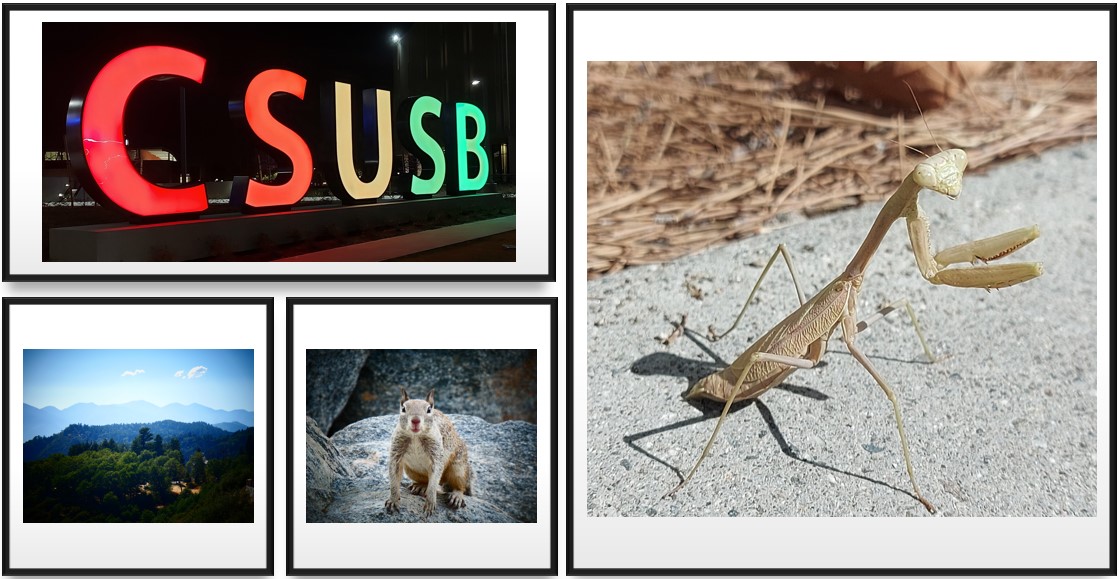
Mahmood Nikbakhtzadeh
Contact
Bio
- Dr. Nikbakhtzadeh is a faculty of Environmental Health Science (EHS) and the EHS Program Coordinator at the CSU San Bernardino. He is a Medical Entomologist and also a Chemical Ecologist. After graduating with his second PhD in Chemical Ecology (Universität Bayreuth, Germany), he pursued towards a postdoctoral research position at the Ohio State University. In his career journey, he has been a scientist at the UC Davis and worked as a vector biologist for the state of Vermont. He is also an adjunct assistant professor in the School of Public Health, San Diego State University.
- He is an active member of several esteemed professional societies, including the Entomological Society of America, the American Mosquito Control Association, and the German Society of General & Applied Entomology. Furthermore, Dr. Nikbakhtzadeh serves as a valued member of the editorial boards of several scholarly journals, including the CSU Journal of Sustainability and Climate Change, SM Journal of Biology, Journal of Public Health & Surveillance Systems, and MERLOT Biology. He has contributed significantly to journals within his areas of expertise, including the Journal of the American Mosquito Control Association, Journal of Medical Entomology, Vectors & Parasites, PLOS ONE, Journal of Venomous Animals & Toxins, and the Asia-Pacific Journal of Tropical Diseases.
- His extensive educational and fieldwork experiences spanning the Middle East, Africa, Europe, and the United States provide his students with a global perspective.
- Beyond his academic pursuits, Dr. Nikbakhtzadeh is an avid nature photographer and a staunch advocate for environmental protection and wildlife conservation.

CSUSB Campus & its Surroundings
Education
PhD in Medical Entomology (Tehran University of Medical Sciences, Iran)
PhD in Chemical Ecology (University of Bayreuth, Germany)
Postdoctoral Researcher (The Ohio State University)
Scientist (University of California, Davis)
Courses/Teaching
At CSU San Bernardino:
HSCI 3052 (Principles of Environmental Health): 3 units
HSCI 3580 (Principles of Toxicology): 3 units
HSCI 4501 (Advanced Environmental Health): 4 units, including lab
HSCI 4503 (Control of Vector-borne Diseases): 4 units, including lab
HSCI 5531 (Bioterrorism): 3 units
At other campuses:
Environmental Science
Introductory Entomology
Medical Entomology
Toxicology of Pesticides
Specialization
- Mosquito behavior and ecology
- Mosquito-plant interactions
- Effect of agricultural pollutants on non-target organisms
- Climate change & vector-borne diseases
Research and Teaching Interests
Teaching
Dr. Nikbakhtzadeh is a passionate educator who finds immense joy in teaching and collaborating with his students. His dedication extends beyond the classroom, as he is deeply committed to conducting research on vectors and vector-borne diseases. Dr. Nikbakhtzadeh's exceptional commitment to his students goes beyond his official responsibilities, as he actively supports and assists them in their academic and professional growth.
Research
Dr. Nikbakhtzadeh is actively engaged in research and oversees two laboratories: the Vector Behavior Lab and The Mosquito Rearing Facility.
His research projects, funded both internally and externally, concentrate on exploring the impact of agrochemicals on various aspects of mosquito behavior, development, survival, physiology and fitness for the transmission of pathogens. The lab group comprises both undergraduate and graduate students.
If you have an interest in his research, feel free to contact him directly.
Links to some of Dr. Nikbakhtzadeh's publications:
* Nikbakhtzadeh MR. 2023. A synthetic lure for Anopheles gambiae (Diptera: Culicidae) based on the attractive plant Parthenium hysterophorus, Journal of Medical Entomology. tjad077, https://doi.org/10.1093/jme/tjad077
https://academic.oup.com/jme/advance-article-abstract/doi/10.1093/jme/tjad077/7207919?redirectedFrom=fulltext
* Nikbakhtzadeh MR, Fuentes Y. 2022. Deterrent effects of glyphosate on oviposition and larval development of Culex quinquefasciatus. Journal of American Mosquito Control Association. 38(3)
https://meridian.allenpress.com/jamca/article/doi/10.2987/22-7059/484389/DETERRENT-EFFECTS-OF-GLYPHOSATE-ON-OVIPOSITION-AND
* Nikbakhtzadeh MR, Buss GK and Leal WS. 2016. Toxic effect of blood feeding in male mosquitoes. Frontiers in Physiology. 7:4. doi: 10.3389/fphys.2016.00004.
https://www.frontiersin.org/articles/10.3389/fphys.2016.00004/full
* Nikbakhtzadeh MR, Terbot JW, Foster WA. 2016. Survival Value and Sugar Access of Four East African Plant Species Attractive to a Laboratory Strain of Sympatric Anopheles gambiae (Diptera: Culicidae). Journal of Medical Entomology. 53(5): 1105-111. doi: 10.1093/jme/tjw067.
https://academic.oup.com/jme/article/53/5/1105/1751595
* Zianni MR, Nikbakhtzadeh MR, Jackson BT, Panescu J, Foster WA. 2013. Rapid identification of Anopheles gambiae s.s. and Anopheles arabiensis by High Resolution Melt (HRM) analysis. Journal of Biomolecular Techniques. 13. doi: 10.7171/jbt.13-2401-001.
https://www.ncbi.nlm.nih.gov/pmc/articles/PMC3518878/
* Nikbakhtzadeh MR, Movaheddi N. 2010. Hydrocarbon Diversity of the Dufour Glands in the Iranian Populations of Pachycondyla sennaarensis (Hymenoptera: Formicidae). Mitteilungen der DGaaE. 17: 307-310.
https://www.cabdirect.org/cabdirect/abstract/20103104775
* Nikbakhtzadeh MR, Dettner K, Boland W, Gäde G & Dötterl S. 2007. Intraspecific Transfer of Cantharidin within Selected Members of Family Meloidae (Insecta: Coleoptera). Journal of Insect Physiology. 53(9): 890-899.
https://www.sciencedirect.com/science/article/pii/S0022191007000479?casa_token=6h2caCshQ5oAAAAA:XViEAYOHA5cboA6hfZWVOo1nwAMKB441HkzruiRgt0hDY9ITPjqGZuyh218KyNzE4tjqVcRl7UY